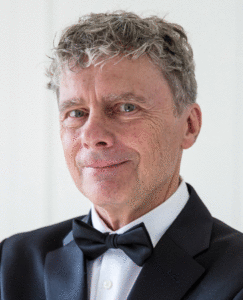 The 1969 hit song “Dizzy” by Tommy Ray begins with the chorus “I’m so dizzy, my head is spinning” and goes on to declare “you’re making me dizzy”. The song describes infatuation and love. Unfortunately, feelings of love cannot account for over 10 million diagnoses of dizziness reported each year in hospital emergency departments. Debilitating forms of vertigo and dizziness are often accompanied by rapid eye movements, nausea, headaches and other serious symptoms that make it impossible to walk, drive, work, and sometimes even speak. In most cases the problem is a disorder of the inner ear vestibular organs that comprise 3 semicircular canals responsible for sensing angular motion and 2 otolith organs responsible for sensing gravity and linear movements in each ear. When vestibular sensors are not working properly, they send incorrect motion signals to the brain causing the eyes to move uncontrollably and making walking, standing and performing other daily functions very difficult. The Utah Biomedical Engineering Otology Laboratory led by BME faculty Richard Rabbitt was recently awarded two grants to improve understanding, diagnosis, and treatment of vestibular disorders.
The 1969 hit song “Dizzy” by Tommy Ray begins with the chorus “I’m so dizzy, my head is spinning” and goes on to declare “you’re making me dizzy”. The song describes infatuation and love. Unfortunately, feelings of love cannot account for over 10 million diagnoses of dizziness reported each year in hospital emergency departments. Debilitating forms of vertigo and dizziness are often accompanied by rapid eye movements, nausea, headaches and other serious symptoms that make it impossible to walk, drive, work, and sometimes even speak. In most cases the problem is a disorder of the inner ear vestibular organs that comprise 3 semicircular canals responsible for sensing angular motion and 2 otolith organs responsible for sensing gravity and linear movements in each ear. When vestibular sensors are not working properly, they send incorrect motion signals to the brain causing the eyes to move uncontrollably and making walking, standing and performing other daily functions very difficult. The Utah Biomedical Engineering Otology Laboratory led by BME faculty Richard Rabbitt was recently awarded two grants to improve understanding, diagnosis, and treatment of vestibular disorders.
The first project funded by the National Institute on Deafness and other Communication Disorders (NIDCD) is focused on developing an effective treatment for complex forms of a vestibular disorder called Benign Paroxysmal Positional Vertigo (BPPV). BPPV is caused by pathological calcium carbonate debris (called canaliths) located inside the inner ear that move under the action of gravity, which prompts debilitating dizziness when patients move their head in space. The most common form of BPPV can be treated using a procedure that moves the debris to an innocuous location inside the ear, but complex forms of BPPV can be very difficult to diagnose and treat. For example, the current standard of care is often ineffective for patients suffering from BPPV in both ears, or patients with BPPV afflicting multiple semicircular canals at the same time. Rabbit’s work is designing and evaluating procedures that are effective to treat complex forms of the disorder. The project is in collaboration with Dr. S. Joshi and Dr. S. Elhabian at the Utah Scientific and Computing Institute to perform computer simulations of BPPV treatments that account for the complex patient-specific anatomy of the inner ear labyrinth, and in collaboration with clinicians that treat BPPV at leading centers in the US.
The second Rabbitt project funded by the Army Research Laboratory is focused on improving the understanding of biophysical mechanisms underlying excitability of and damage to inner ear vestibular organs. The vestibular system evolved to sense motion hundreds of millions of years ago in an environment free from loud human-generated noise like sirens and rock music, and free from machine vibrations like hammer drills and airplane engines, and free from electromagnetic energy found in communication systems. Rabbitt seeks to preserve critical function of the vestibular organs in the presence of common forms of energy in the modern world. To do this, he must first understand mechanisms underlying vestibular system activation and downstream consequences. This project is pursued in close collaboration with Dr. S. Rajguru, a Utah BME alumnus and now Professor of BME and Otolaryngology at the University of Miami.